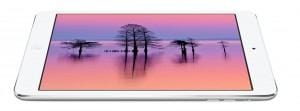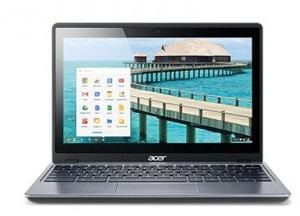Travel Tips
Leave the Laptop Behind With These Connected Gadgets
When you’re traveling for pleasure, it can be tempting to bring along your laptop, just in case. But too many people store personal—and confidential—information on their everyday devices. Not to mention, being on the road means there’s plenty of opportunity to lose or misplace your costly gear. Expert Phil Baker weighs in with his favorite connected gadgets that keep you connected without weighing you down.
There are two good contenders to stay connected on your travels: a tablet or a notebook that stores information in the cloud.
In this corner: The iPad
A tablet is great for being entertained: watching movies, reading books, and playing games. You can send and receive emails, check the news back home and keep in touch with your friends using Facebook.
Among all the tablets on the market, I prefer iPads. While more costly than some, the assortment of apps is second to none. I’m currently using an iPad mini, and trying the new, larger iPad Air, with 8-inch and 10–inch screens, respectively.
For local traveling, I rarely go anywhere without the mini. It’s the perfect size and weight and it works so well for doing so much. At just about the size of a Moleskine notebook or small datebook, it’s small enough to carry. As a result, I’ve taken it on many trips.
the perfect size and weight and it works so well for doing so much. At just about the size of a Moleskine notebook or small datebook, it’s small enough to carry. As a result, I’ve taken it on many trips.
It’s convenient for accessing websites and reading spreadsheets, presentations, and especially books—something you can’t do with all notebooks. The text is large enough and extremely clear and, because of its smaller size and weight, I find I read more ebooks and magazines than I did on the larger iPad.
Over time, the mini became more to me than just another tablet. It reminded me of a Filofax, a once-popular, leather-covered loose-leaf binder that I used to carry to manage my calendar, address book, and notes. That’s the way I look at the mini: something so personal, used dozens of times a day.
The iPad mini sells for $329 with 16GB of memory. If you add cellular data and a bit more memory, the price can skyrocket to over $600. I went wild and paid $629 for a 32GB model and built-in Verizon cellular LTE. (And just as a reminder: Verizon can get away with whatever it wants. I had to pay another $30 for a connection.)
You may also want to consider the new iPad Air ($500), which manages to cut its weight to just a few ounces more than the mini. Because it’s larger, with an optional keyboard and the new Microsoft Office, it will allow you to create, read and edit documents.
In the other corner: The Chromebook
 If you want something more akin to a notebook, consider the Acer C720/ZHN Chromebook, which costs just $249. It looks just like a slim, lightweight notebook computer, with an 11.6-inch screen and full-size keyboard, for $249.
If you want something more akin to a notebook, consider the Acer C720/ZHN Chromebook, which costs just $249. It looks just like a slim, lightweight notebook computer, with an 11.6-inch screen and full-size keyboard, for $249.
What’s the catch? Chromebook uses the Chrome OS, a computer platform invented by Google that’s built around the Chrome browser as its interface. Chrome OS is designed to take full advantage of the cloud, while keeping hardware features to a minimum. It doesn’t need a fast processor or a hard drive. It comes with 100GB of online storage called Google Drive, 16GB of internal storage, and 2GB of RAM. A Google Drive with 100GB of storage costs $60 a year, beginning in the third year.
The problem is that you need a wireless connection to do most of the things you now do on your standard notebook, and that’s sometimes a problem while traveling. Many European hotels have slow connections and some even charge hefty rates for the privilege. Relying on wireless means that, when you lose connectivity, you lose access to most of your files, your email inbox, and office apps. Although there are few simple apps that let you write email and docs while offline.
There’s no OS to learn, no updates to slow you down, just a simple browser window with several icons at the bottom of the screen. One of the icons opens a small settings menu and another opens a small popup window with 24 built-in Google apps, including Gmail, Google Calendar, Google Maps, Google Docs, a file manager, music player, camera, and photo manager. For the traveler, losing the Chromebook is much less traumatic when all your files are in the cloud and a replacement is less than $300.
Bottom line: For those who spend lots of time online browsing, doing email, and writing, you may find a Chromebook to be a perfectly suitable substitute as a traveling computer. But it’s hard to beat a tablet—or specifically an iPad—that provides more functionality and is easy to carry with you. Plus, you aren’t dependent on a wireless connection most of the time.
For more information about travel gadgets, take a look at:
- The Top 10 Eco-Friendly Gadgets for Earth Day
- 5 New Travel Gadgets That Are Becoming Essential
- 5 Gadgets From CES 2014 That Will Change How We Travel
By Phil Baker for PeterGreenberg.com. You can read Phil’s blog at blog.philipgbaker.com, and click here to check out his book, From Concept to Consumer: How to Turn Ideas into Money.












